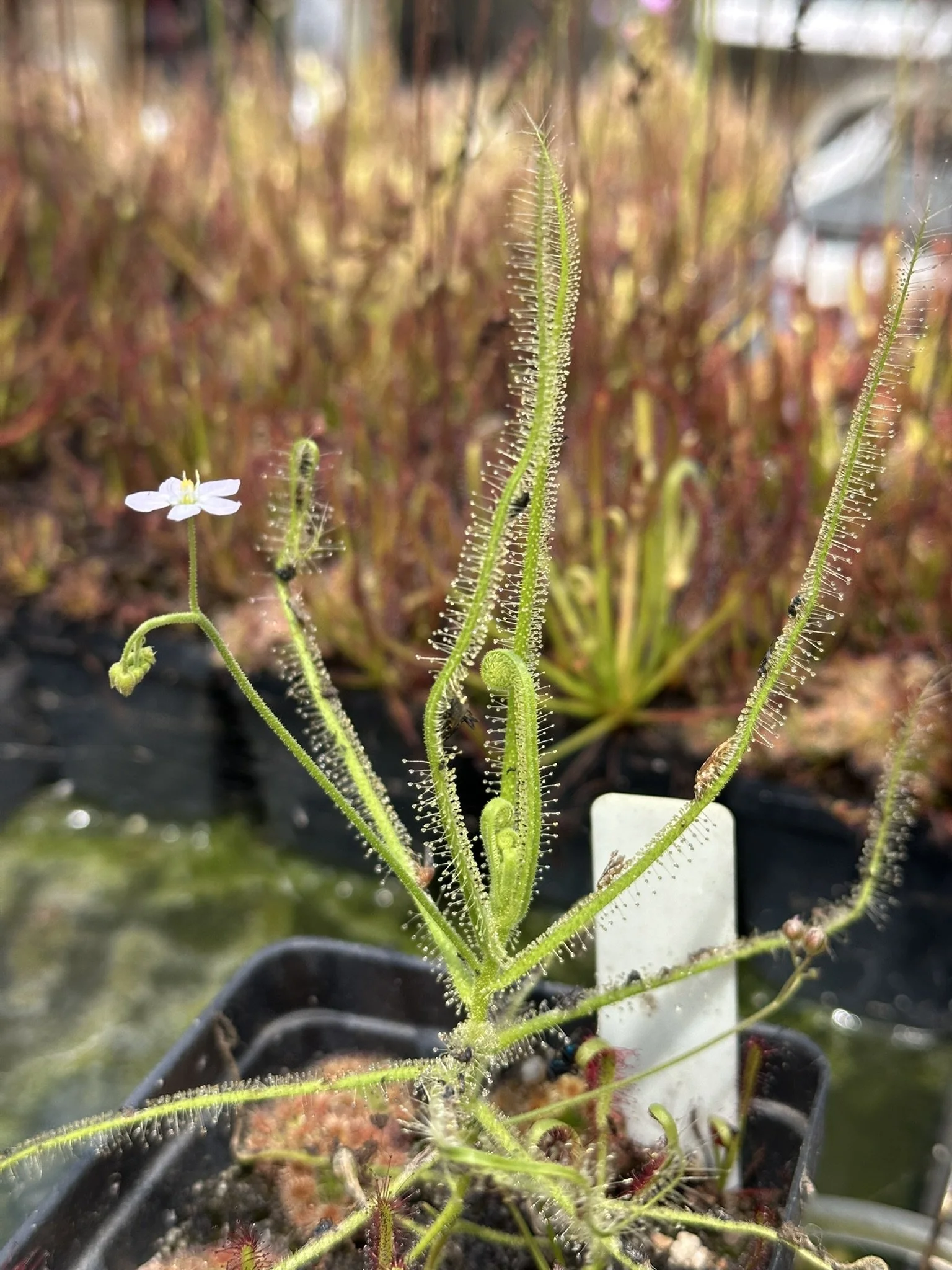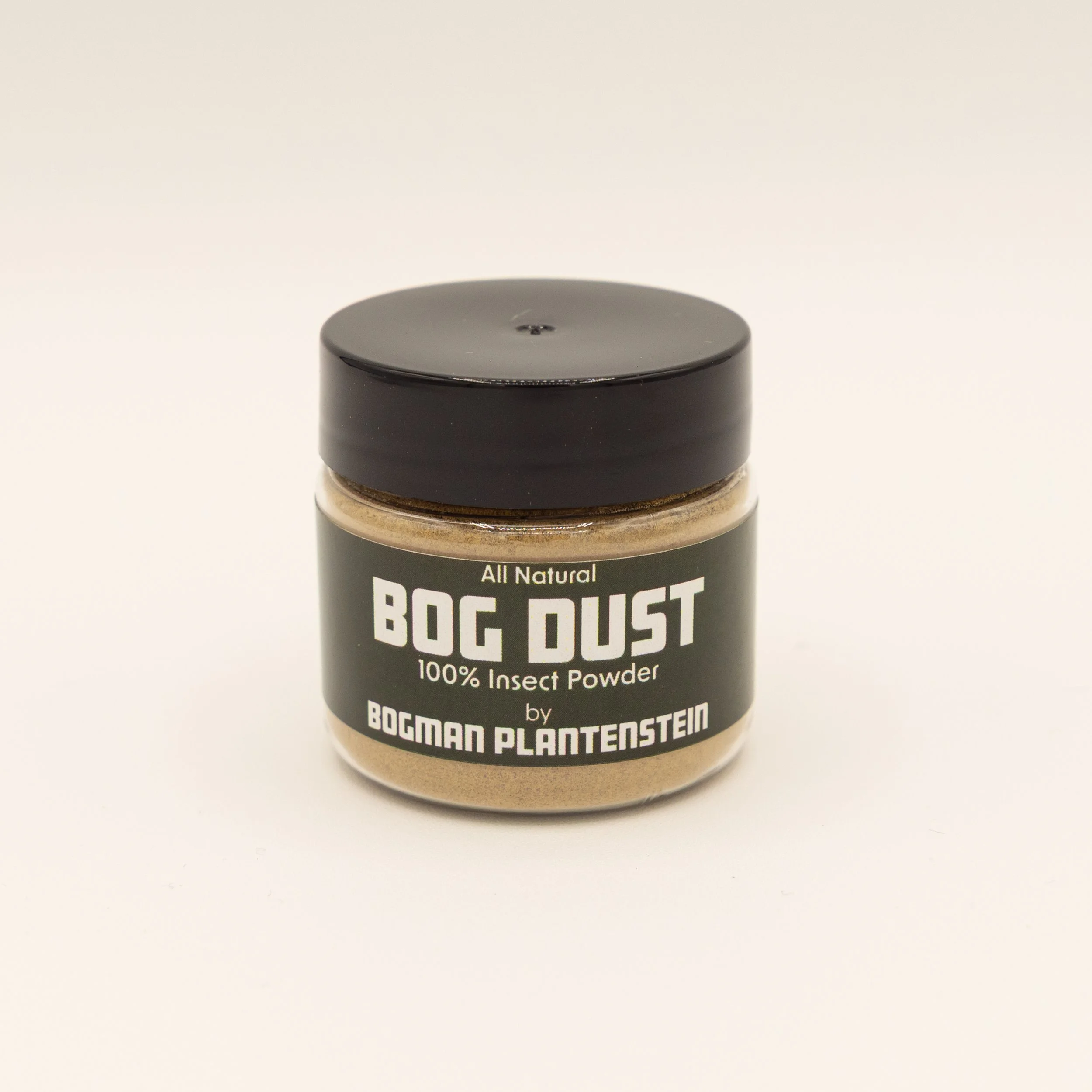 Image 1 of 5
Image 1 of 5

 Image 2 of 5
Image 2 of 5

 Image 3 of 5
Image 3 of 5

 Image 4 of 5
Image 4 of 5

 Image 5 of 5
Image 5 of 5






SEEDS - Drosera finlaysoniana
Description
Drosera finlaysoniana is an amazing tropical sundew with long, spindly leaves radiating from a thin, scrambling stem. This species is a more robust species of the section Arachnopus and can grow to 12” tall within a year. The distinguishing feature of Drosera finlaysoniana is the lack of a petiole with tentacles extending down the base of the leaf. The plant remains a bright green color with translucent, pale tentacles and gland covering the entire plant. The flowers are very light pink in color and open only minimally as it readily self-pollinates to produce copious seed. As an annual species in the wild, it is short-lived and will decline after flowering profusely.
Native to a wide range in Southeast Asia and Northern Australia, Drosera finlaysoniana grows in a variety of conditions. It grows where there are distinct wet and dry seasons, germinating with the rains, growing and producing seed, then dying during the dry season. This form has unknown origin and seems to grow best in more mild climates with good airflow compared to lowland tropical conditions. This species has perplexed growers due to the variability of success even in seemingly similar conditions. Some say it requires drier, sandy soils, while others just throw it outdoors with minimal effort and excellent growth. What has worked for me is well-drained soils, sitting in water, and mild climatic conditions. But this may not work for everyone. Germination is erratic in timing, but pretty easy and grow is rapid, but seedlings need proper conditions and feeding to survive.
Packs will have 30+ seeds.
Growing Information
Climate: Temperatures from 50-100F, moderate humidity. It seems to like good airflow.
Light: Full Sun or 20W per sq ft LED light.
Water: Distilled or Reverse Osmosis water. Sitting in 0.5-1” of water using tray method. Only use distilled, reverse osmosis, or rainwater because tap water is toxic to carnivorous plants due to high mineral content and chlorine.
Soil: 30% Peat Moss: 70% Perlite/Sand. Rinse media with distilled or reverse osmosis water to remove excess salts. I have grown it successfully in water trays with a very sandy mix, but have not experimented with other methods.
Feeding: Feed leaves with Insect Powder every 1-2 weeks. Annual species require regular and heavy feeding to grow to maturity.
Description
Drosera finlaysoniana is an amazing tropical sundew with long, spindly leaves radiating from a thin, scrambling stem. This species is a more robust species of the section Arachnopus and can grow to 12” tall within a year. The distinguishing feature of Drosera finlaysoniana is the lack of a petiole with tentacles extending down the base of the leaf. The plant remains a bright green color with translucent, pale tentacles and gland covering the entire plant. The flowers are very light pink in color and open only minimally as it readily self-pollinates to produce copious seed. As an annual species in the wild, it is short-lived and will decline after flowering profusely.
Native to a wide range in Southeast Asia and Northern Australia, Drosera finlaysoniana grows in a variety of conditions. It grows where there are distinct wet and dry seasons, germinating with the rains, growing and producing seed, then dying during the dry season. This form has unknown origin and seems to grow best in more mild climates with good airflow compared to lowland tropical conditions. This species has perplexed growers due to the variability of success even in seemingly similar conditions. Some say it requires drier, sandy soils, while others just throw it outdoors with minimal effort and excellent growth. What has worked for me is well-drained soils, sitting in water, and mild climatic conditions. But this may not work for everyone. Germination is erratic in timing, but pretty easy and grow is rapid, but seedlings need proper conditions and feeding to survive.
Packs will have 30+ seeds.
Growing Information
Climate: Temperatures from 50-100F, moderate humidity. It seems to like good airflow.
Light: Full Sun or 20W per sq ft LED light.
Water: Distilled or Reverse Osmosis water. Sitting in 0.5-1” of water using tray method. Only use distilled, reverse osmosis, or rainwater because tap water is toxic to carnivorous plants due to high mineral content and chlorine.
Soil: 30% Peat Moss: 70% Perlite/Sand. Rinse media with distilled or reverse osmosis water to remove excess salts. I have grown it successfully in water trays with a very sandy mix, but have not experimented with other methods.
Feeding: Feed leaves with Insect Powder every 1-2 weeks. Annual species require regular and heavy feeding to grow to maturity.


